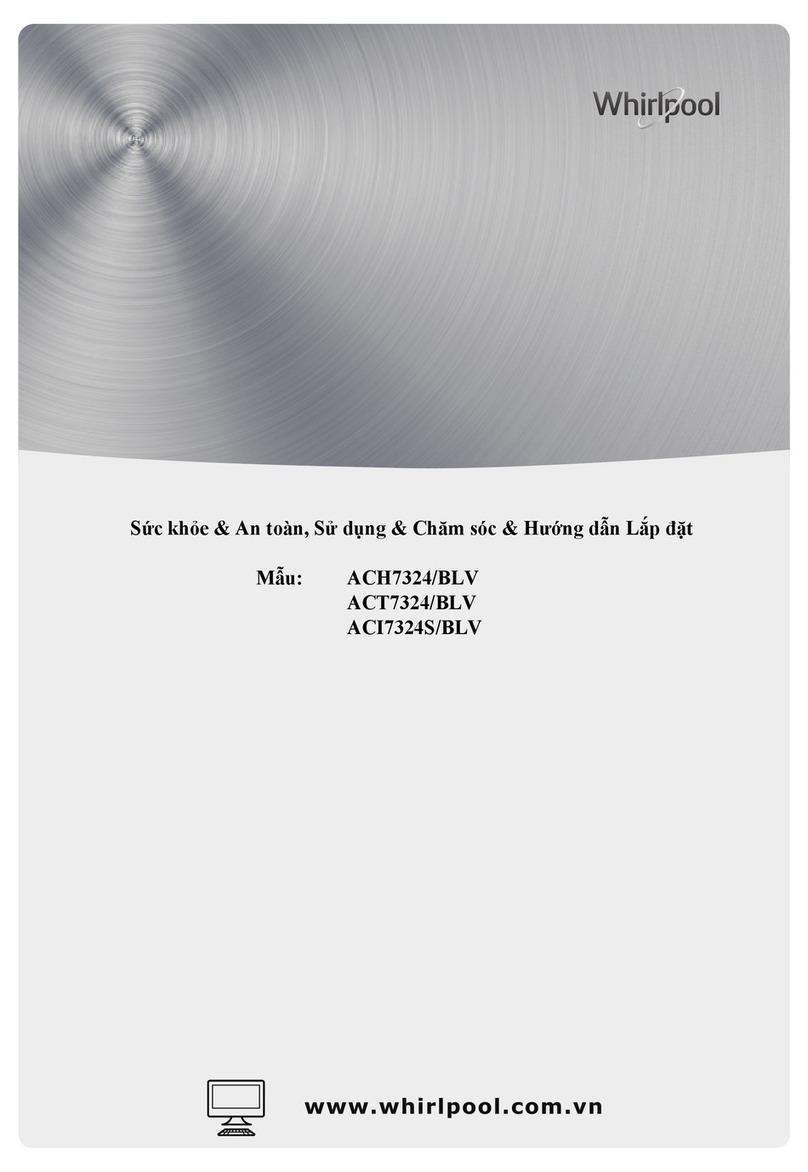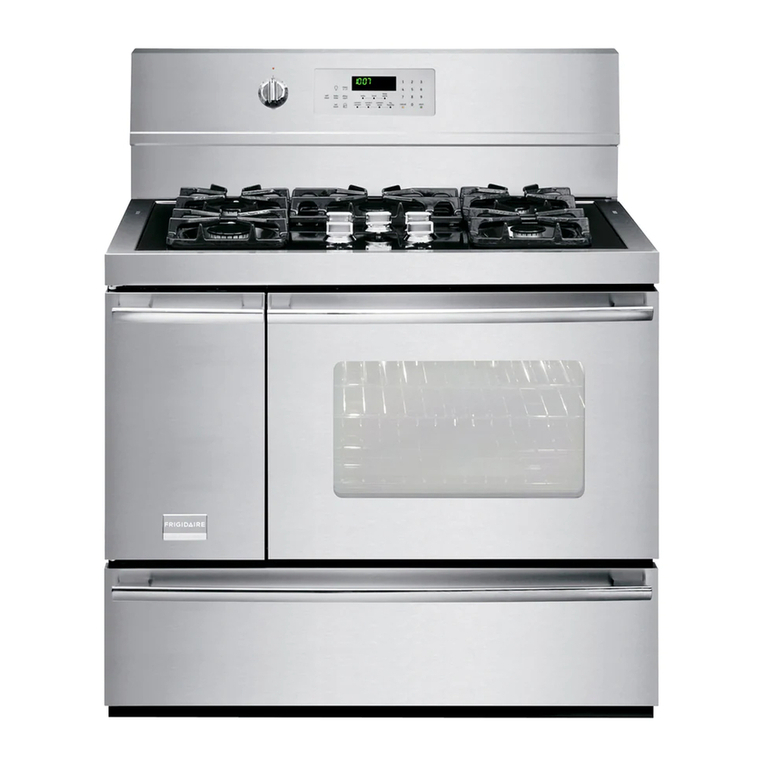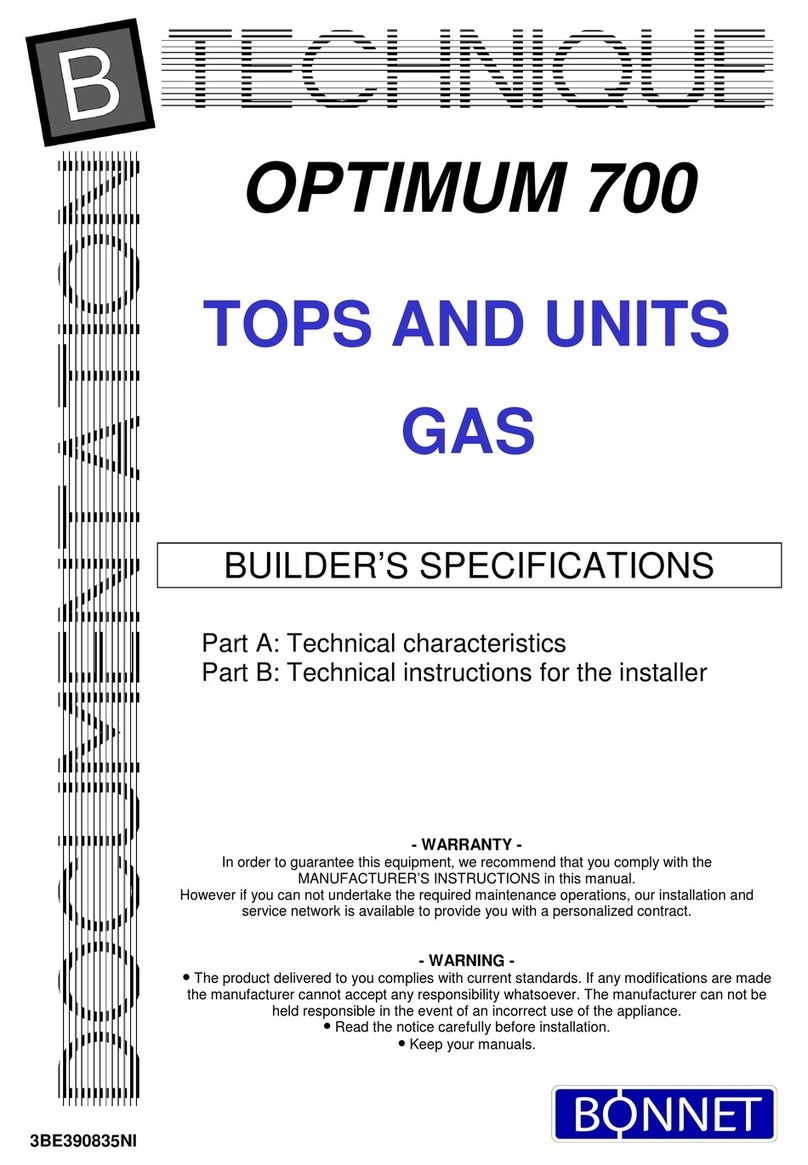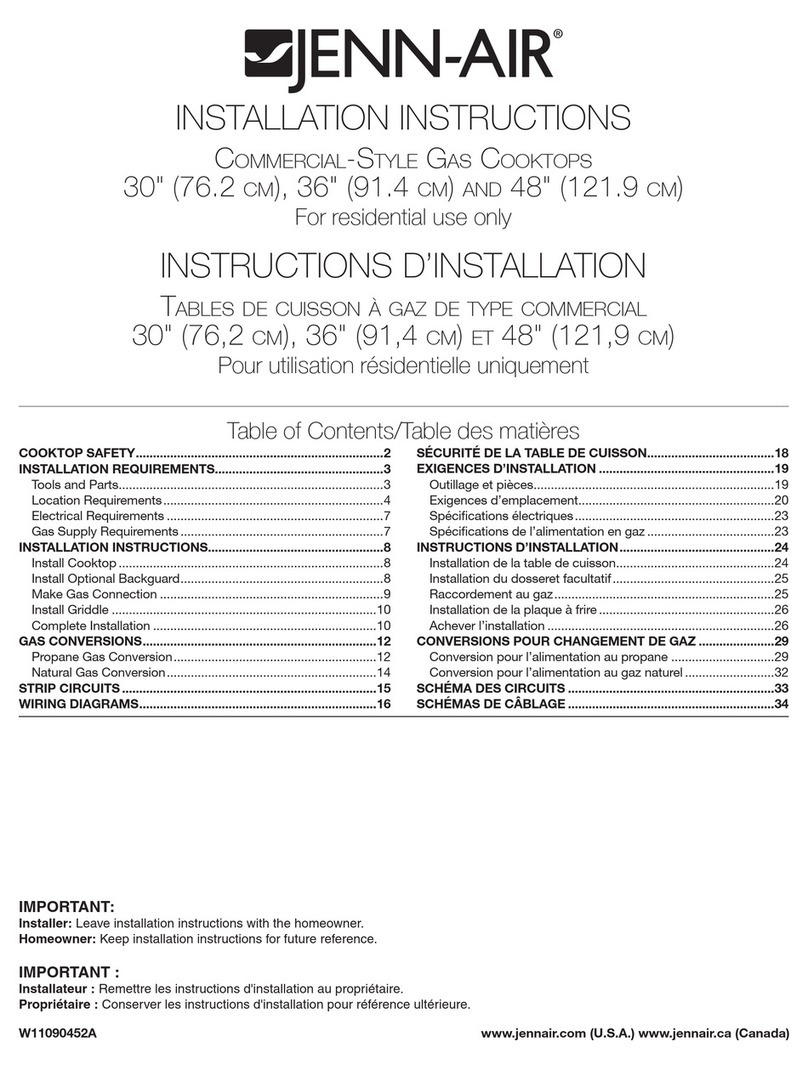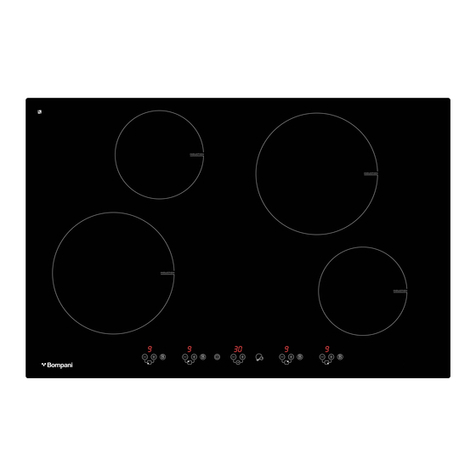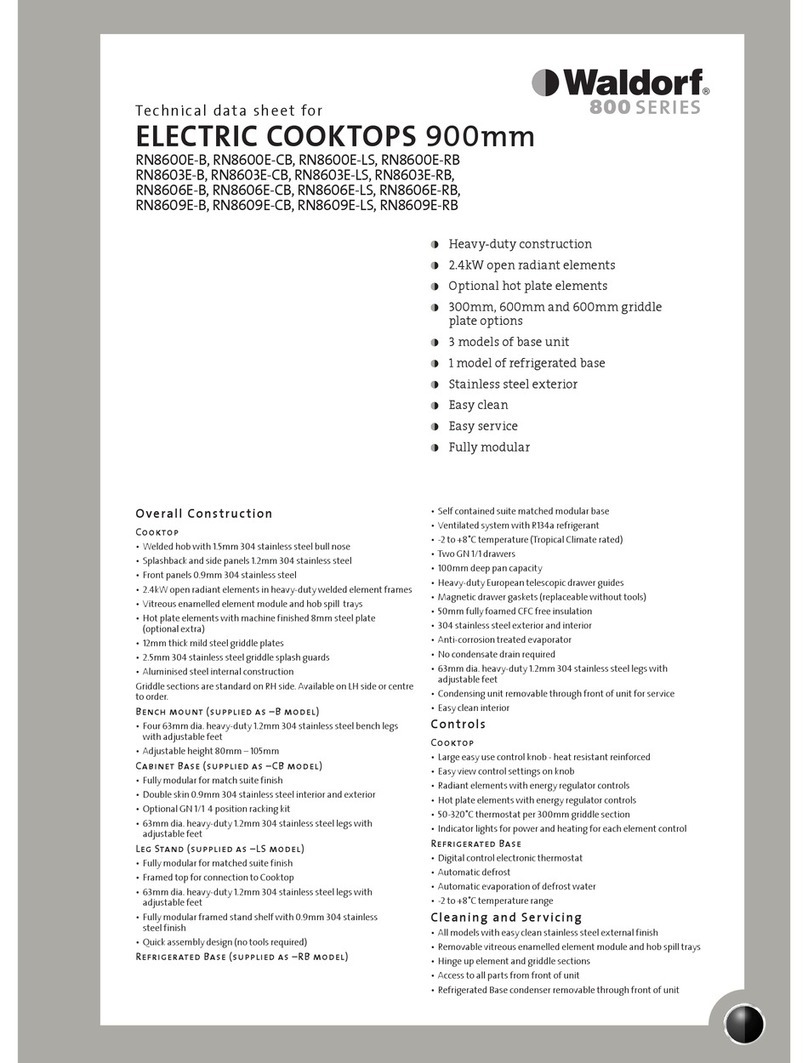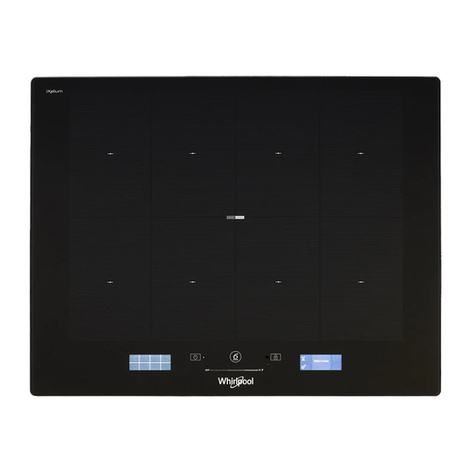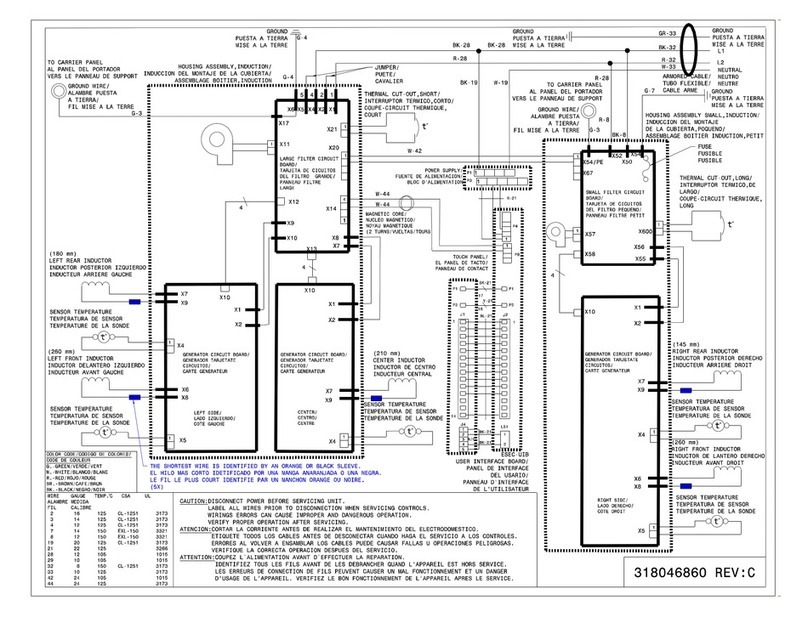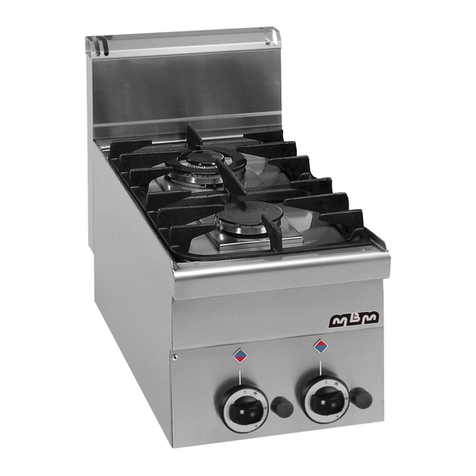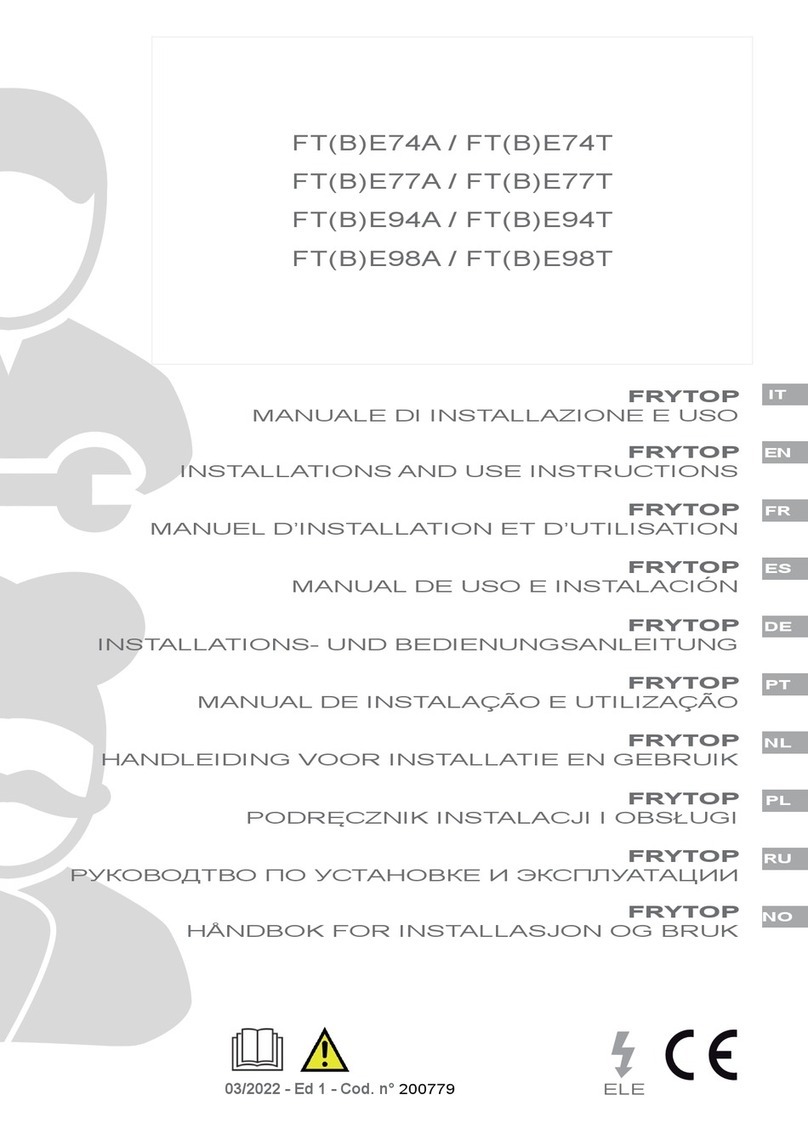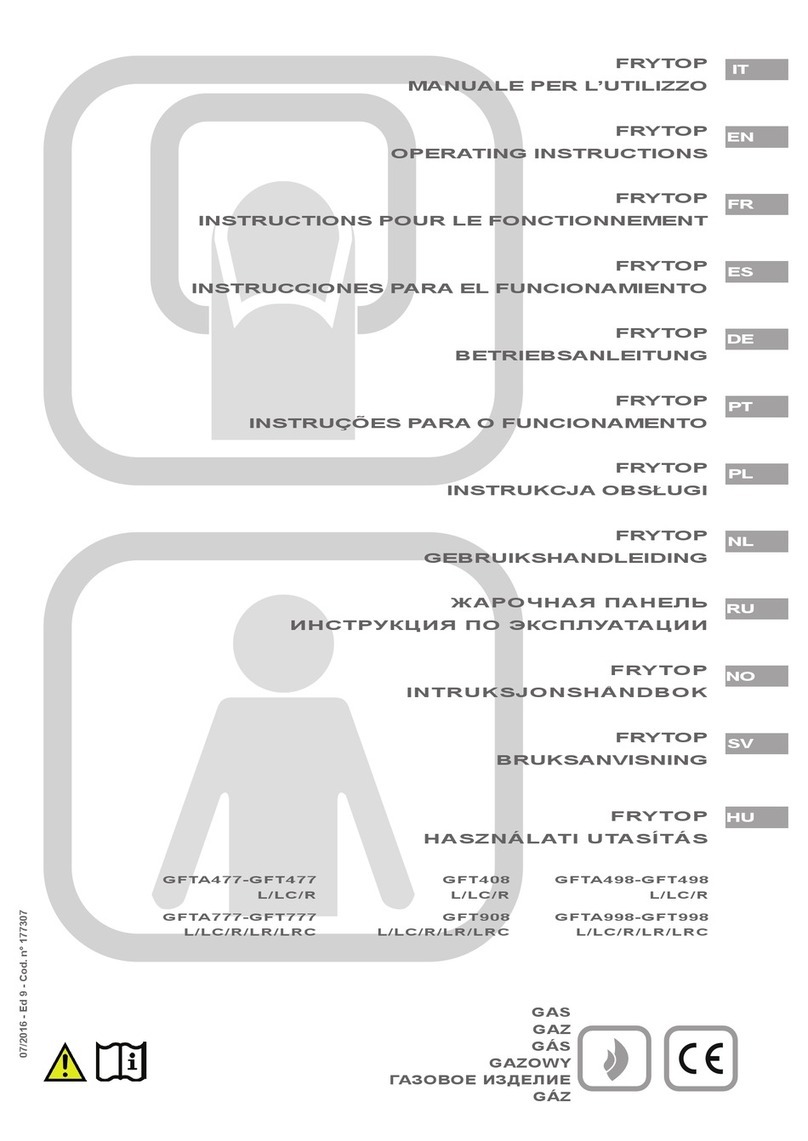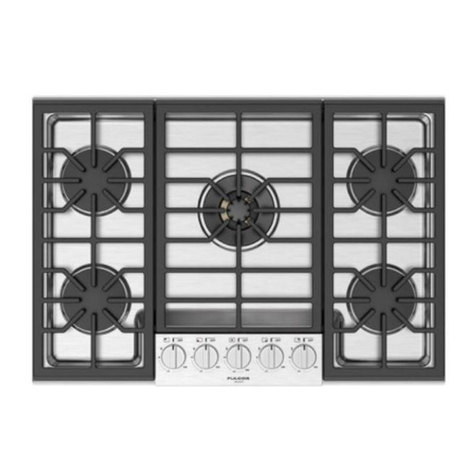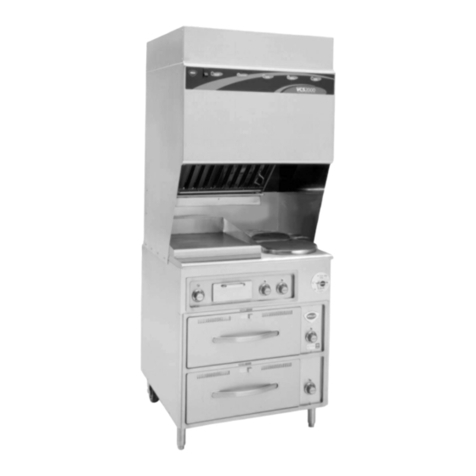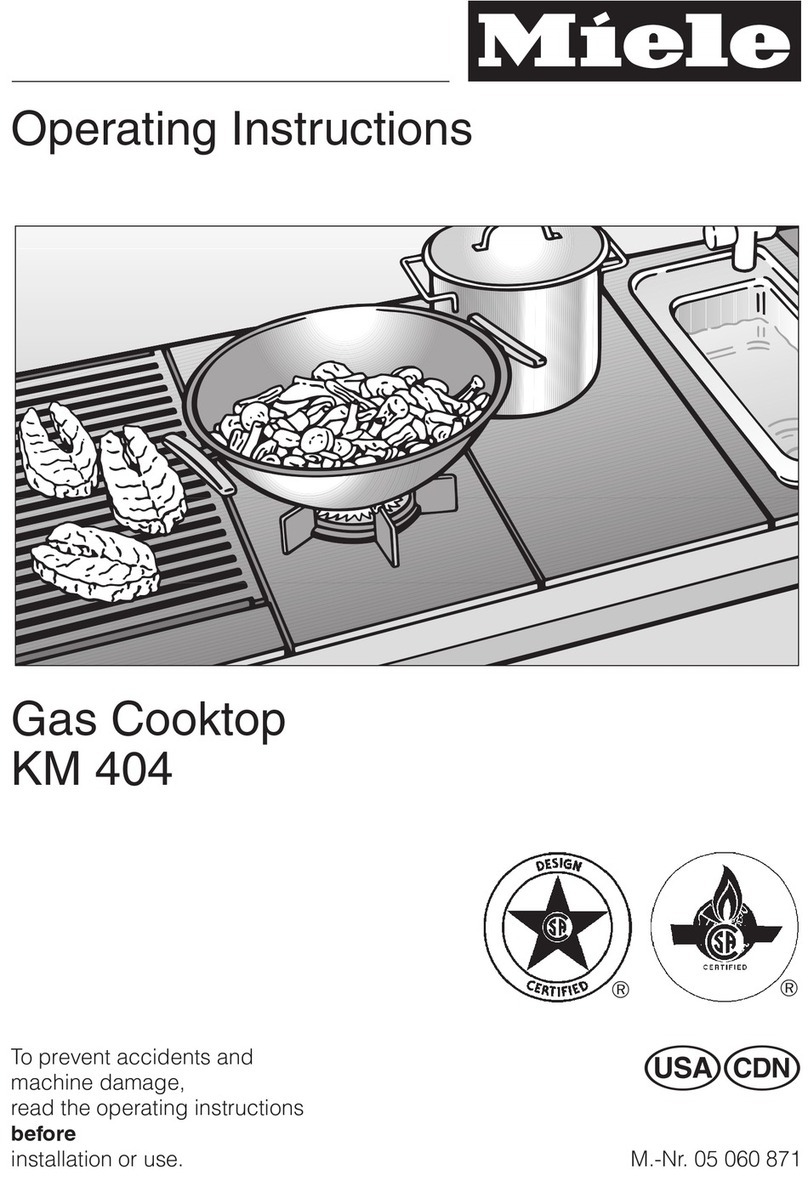
- 7 - IT
2.3 COLLEGAMENTOALL’IMPIANTO DEL GAS
- L’apparecchio deve essere alimentato con gas avente le caratteristiche e la pressione riportata in tabella II.
- La pressione del gas si misura alla presa di pressione iniziale con il bruciatore acceso (vedere Fig. 2 e art. 2.4.1).
- L’apparecchiatura è collaudata e predisposta per funzionare a gas metano H G20 - 20 mbar.
* N.B. Se la pressione in rete varia più del +10% della pressione nominale, viene consigliato di montare un regolatore
di pressione a monte dell’apparecchio per garantire la pressione nominale.
- L’allacciamento alla rete del gas deve essere effettuato con tubazione metallica di adeguata sezione e deve essere inserito
a monte un rubinetto di intercettazione omologato.
- Dopo l’allacciamento alla rete del gas, controllare che non esistano perdite nei punti di raccordo con bolle di sapone.
2.3.1 SCARICO DEI PRODOTTI DI COMBUSTIONE SOTTO UNA CAPPA DIASPIRAZIONE.
APPARECCHIO DEL TIPO: A1
L’apparecchiatura a gas va sistemata sotto una cappa di aspirazione il cui impianto deve avere le caratteristiche conformi
alle Norme. Questo apparecchio necessita di almeno 2 m3/h • kW P.T. (Portata Termica).
Controllare l’aerazione della cucina; deve essere secondo le norme in vigore.
2.4 COME OTTENERE LA PORTATA TERMICA NOMINALE
Controllare se l’apparecchio è predisposto per il tipo di gas, pressione e categoria che corrisponde con il gas disponibile in rete.
Indicazione riportata sull’imballo e/o targhetta sull’apparecchio.
Se l’apparecchio è predisposto per un altro tipo di gas e pressione, occorre prima fare una trasformazione per il funzionamento
ad altro tipo di gas.
Vedere la Tabella II per l’ugello, vite del minimo (by-pass), l’ugello del pilota e la pressione all’ugello del bruciatore principale.
N.B. I nomi degli ugelli «2H» e «3+» sono visibili nella parte sinistra della Tabella II.
2H = G 20 - 20 mbar
3 + = G 30 - 29 mbar e/o G 31 - 37 mbar una coppia di gas e pressione. Nel nostro settore abbiamo quasi sempre a che fare con
G 31 - 37 mbar!
Nella Tabella II sono riportati i tipi di gas e pressione per tutti i bruciatori e i relativi ugelli, la vite del minimo (by-pass),
l’ugello del pilota, la pressione massima e minima all’ugello, la portata termica massima e minima e il consumo gas in l/h
(15°C) o in g/h in caso di G.P.L.
Attenzione: Se la pressione «dinamica» del gas a monte dell’apparecchio è inferiore alla pressione minima della Tabella II,
l’allacciamento è proibito; in più l’installatore deve comunicare all’azienda del gas che la pressione in rete è troppo bassa.
N.B. Se la pressione varia più del +10% della pressione nominale p.e. per G 20 - 22 mbar viene consigliato di montare un
regolatore di pressione a monte dell’apparecchio per garantire la pressione nominale.
Se la pressione in rete è oltre la pressione massima della Tabella II p.e. per G 20 - 25 mbar avvertire l’azienda del gas.
Controllare se la pressione in entrata ed all’ugello corrisponde con i valori riportati nella Tabella II.
2.4.1 CONTROLLO DELLA PRESSIONEA MONTE (PE) FIG. 2
La pressione viene misurata con un manometro 0 ÷ 80 mbar (Precisione almeno 0,1 mbar).
La presa di pressione Fig. 2 si trova sulla rampa gas G 1/2" dietro il cruscotto; svitare la vite (A) della presa di pressione (B),
attaccare la gomma al silicone nel manometro, accendere il bruciatore (Fig. 1 pos. T) e rilevare la pressione «dinamica» a
monte.
Rimontare la vite (A) con rondella di tenuta gas (C), controllare la tenuta gas con bolle di sapone.
2.4.2 CONTROLLO DELLA PRESSIONEALL’UGELLO (PI) FIG. 1
La presa di pressione si trova sotto il supporto iniettori (fig. 1).
La gomma al silicone è adatta per alte temperature e va protetta con carta stagnola per evitare che bruci.
2.4.3 REGOLAZIONE DELLA PORTATA TERMICA MINIMA
La portata termica minimo giusto, viene ottenuta con la vite del minimo by-pass «calibrata» avvitata a fondo secondo la
Tabella II.
Accendere il bruciatore come descritto nel Cap. 5 «Istruzioni per l’utente» in posizione massima (8), girare dopo circa 15
minuti di preriscaldamento la manopola in posizione minima (1).
Per la 2ª e la 3ª Famiglia la vite del minimo by-pass va avvitata fino in fondo.
2.4.4 CONTROLLO PER IL FUNZIONAMENTOA GAS LIQUIDO
Controllare se gli ugelli montati corrispondono con l’indicazione delle Tabelle II.
Verificare se la pressione in entrata corrisponde con le indicazioni della Tabella II.
Controllare se l’impianto a gas G.P.L. ha due regolatori di pressione di sufficiente capacità e se la capacità di evaporazione
può essere considerata sufficiente.
Vedere anche la pubblicazione «Norme di installazione e caratteristiche di Impianti a gas G.P.L.».


